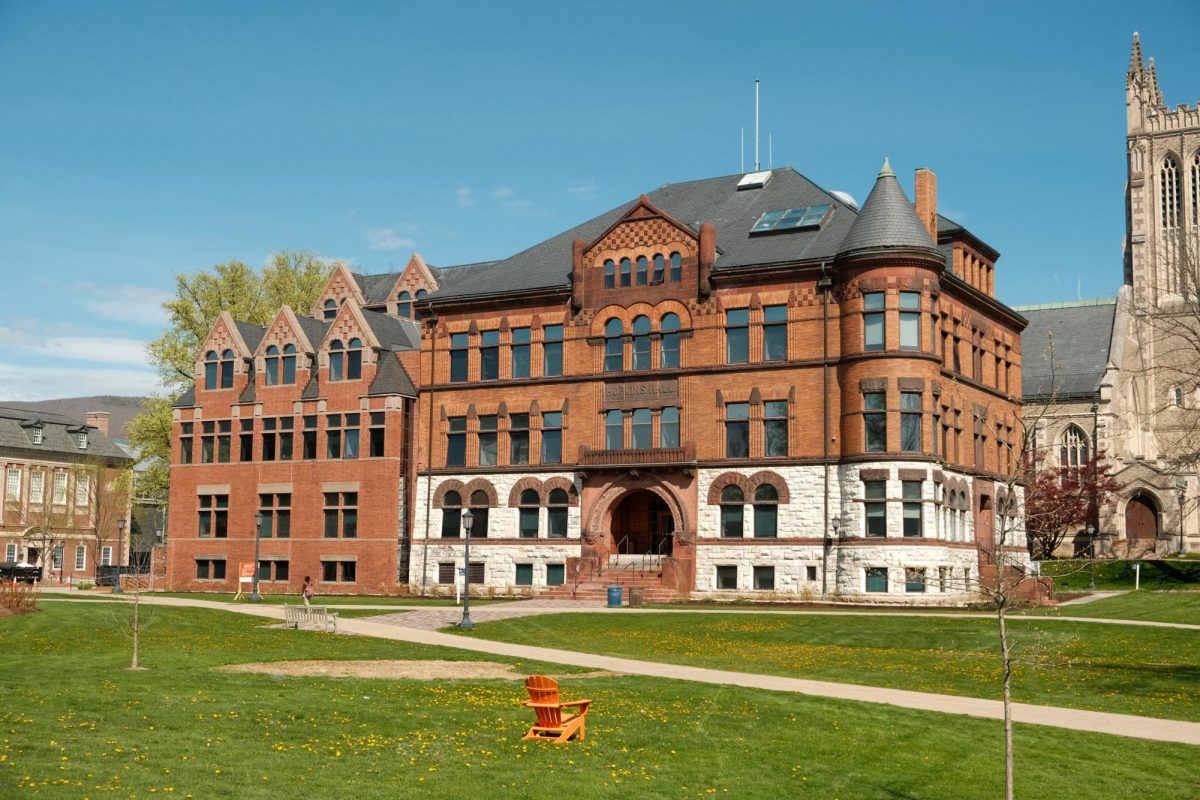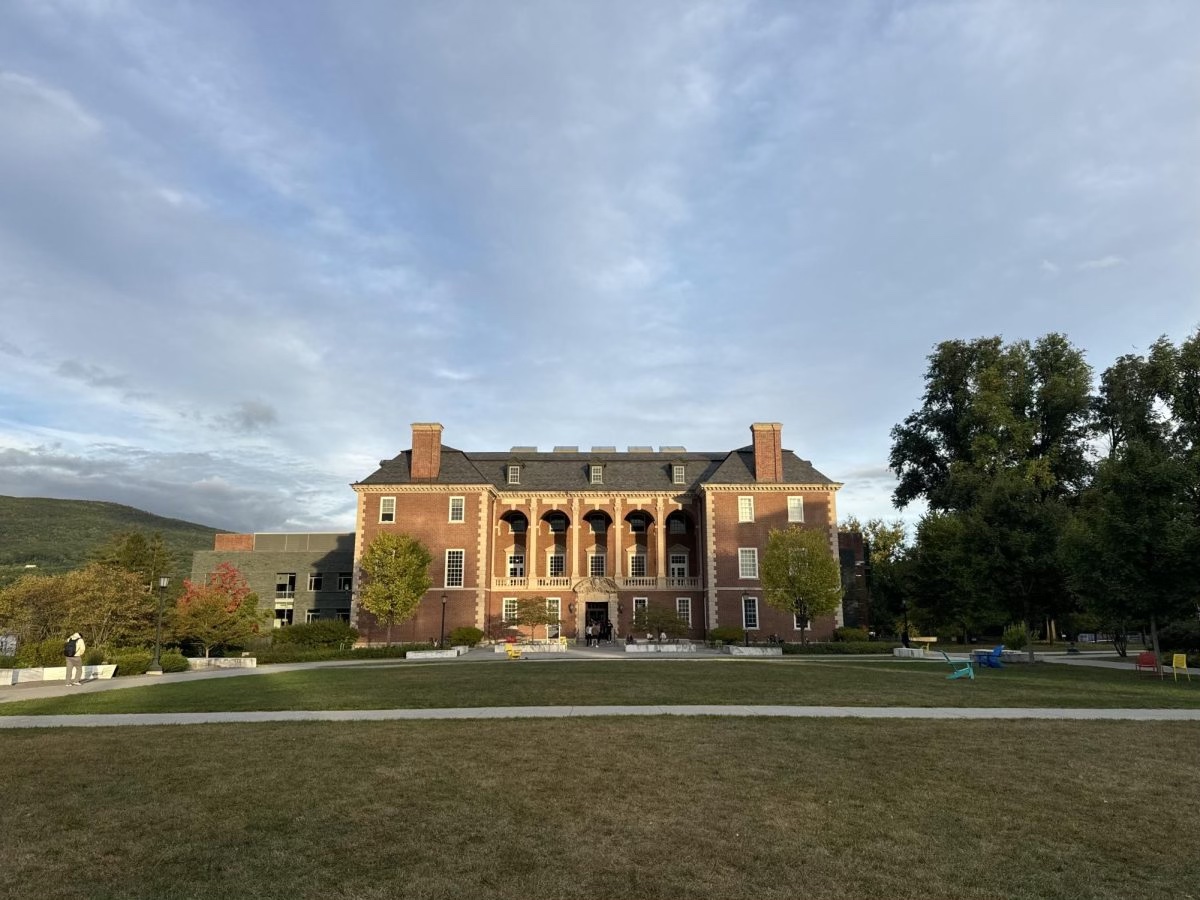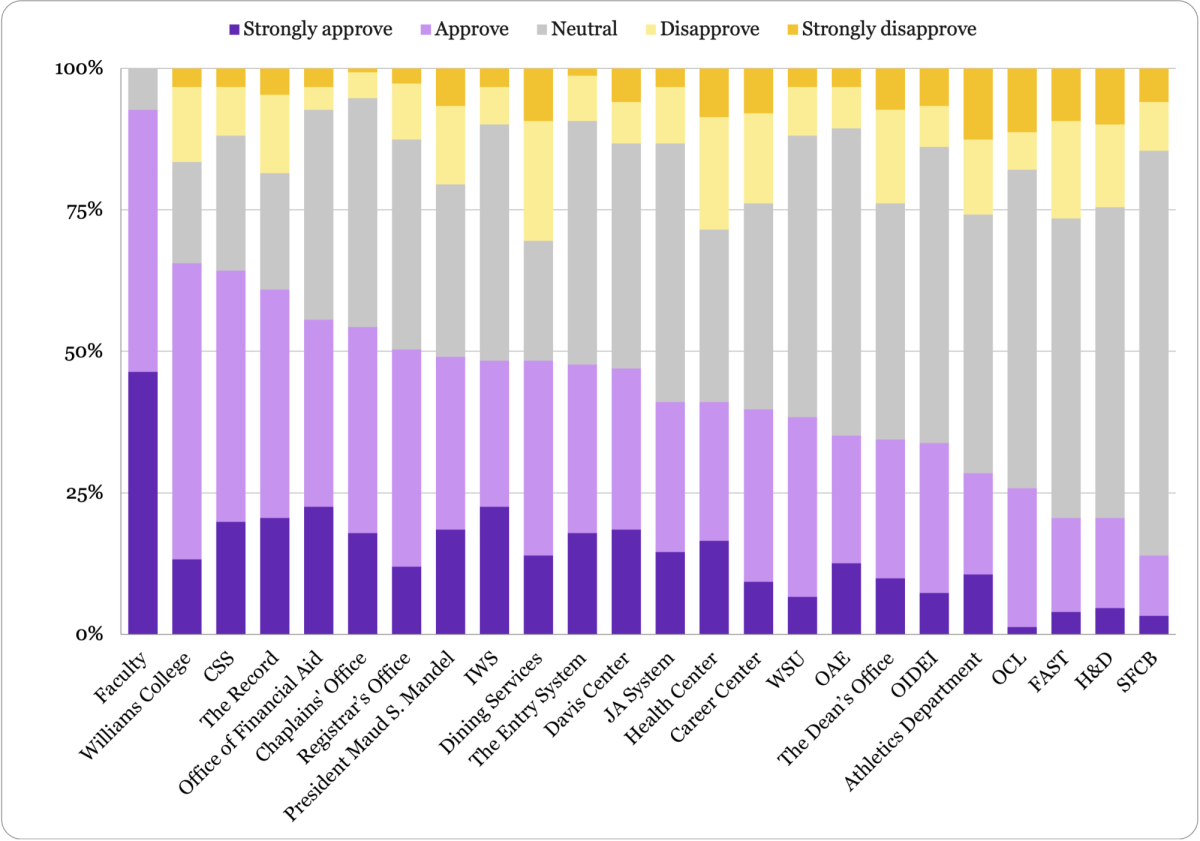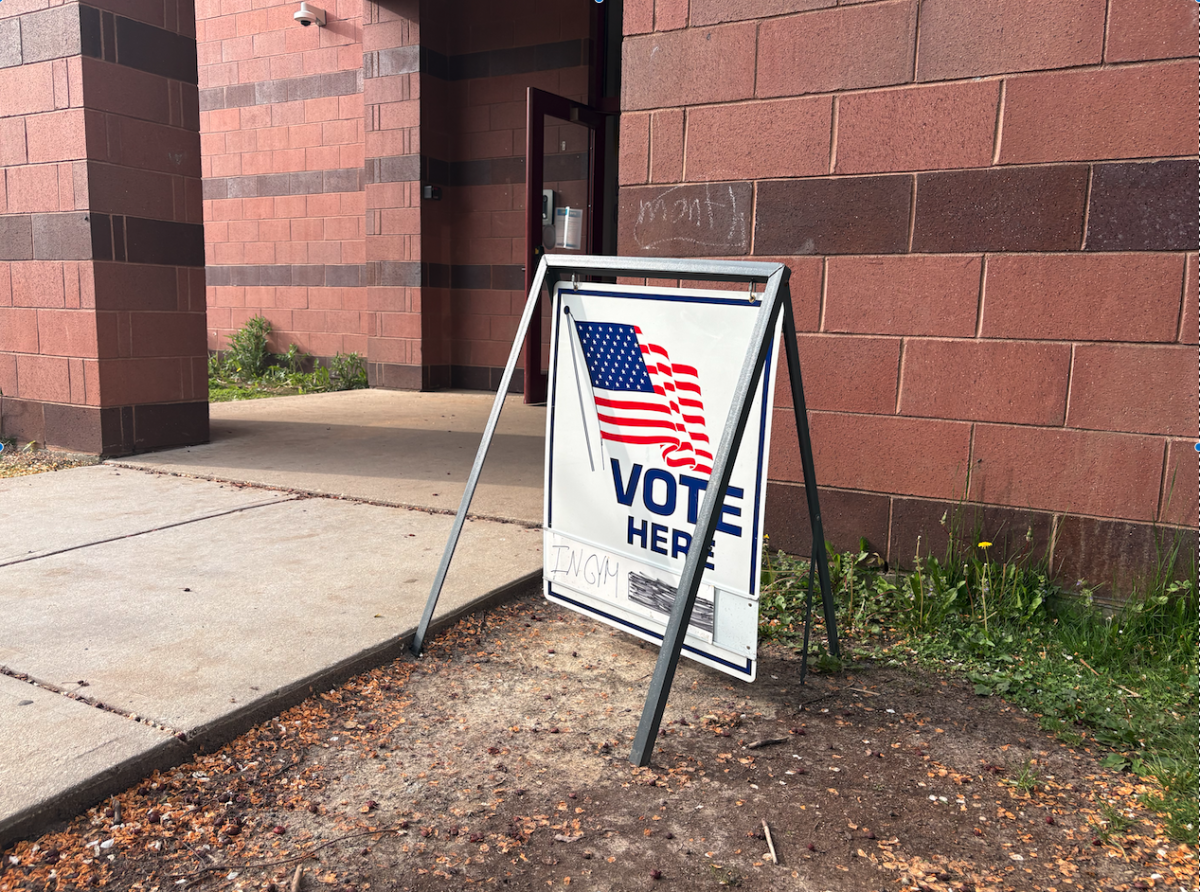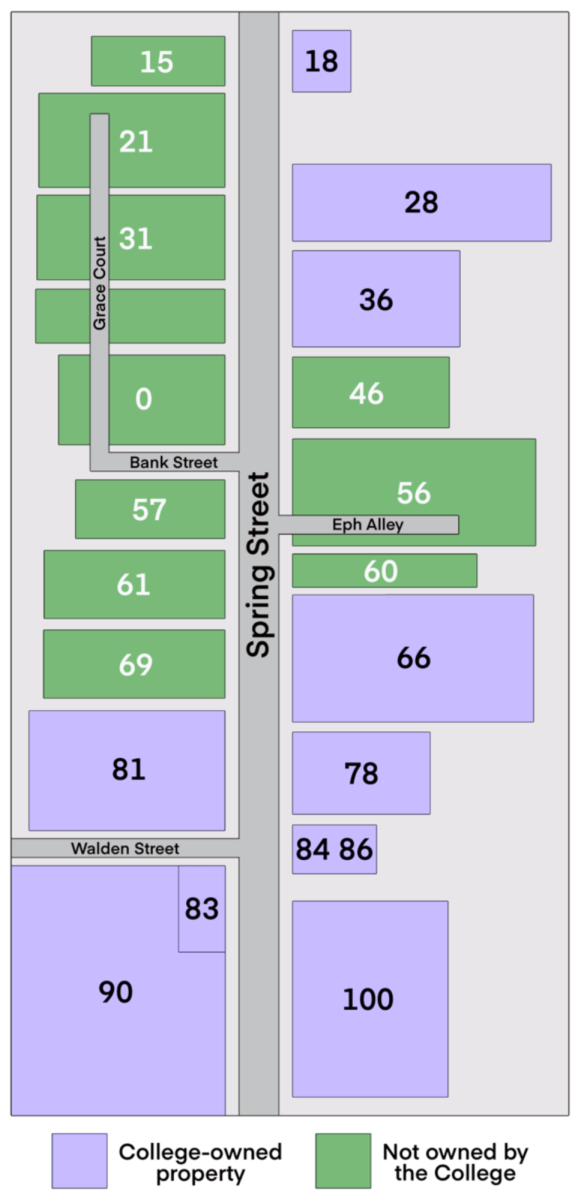Escape into the Regency era of Bridgerton
May 11, 2022
Doesn’t everyone want to be told, “You are the bane of my existence and the object of all my desires?” Anthony Bridgerton’s words in Season two of Netflix’s Bridgerton, a period drama based on Juila Quinn’s book series, still ring in the hearts of escapist romantics. The new season was released on March 25 and centers around Anthony’s pursuit of a wife, specifically his transition from being rigidly focused on a practical marriage to being consumed by his feelings for the untouchable Kate Sharma.
Even two months after the release of its second season, lines from the show such as “And it is not far enough” or string quartet covers of Harry Styles’s “Sign of the Times” can be heard across campus and TikTok feeds. Its popularity partly stems from the beautiful period dresses and the drama about who will be the diamond of the season. Bianca Arce ’24 said that show has additionally gained attention at the College because it feeds escapism. “I think Regency era romance has transcended time,” she said. “Bridgerton is a beautiful example of glitz, glamor, costumes, and scandal — it’s a wonderful show to escape in. As college students, we need to escape sometimes.”
While some students watch Bridgerton to escape into the tales of honor and unrequited love of another time, other students like Jack Davis ’24 were instead drawn to the absurdity of the show’s dramatic flair. “I think Bridgerton is so popular because it is a chance to totally indulge yourself in gossip and drama that will never affect you,” he wrote in an email to the Record. “It’s almost as if you as the viewer act as high society itself as you judge the actions of the different characters and try to predict different outcomes… It’s a chance to shamelessly indulge in gossip and other people’s business, and it’s fun to debate what we think will happen next.”
Oh, and what drama there was this season. After Daphne — the eldest Bridgerton daughter — and the Duke of Hastings were happily married, it became the eldest Bridgerton’s turn to seek marriage. Spoiler alert: Anthony gets engaged to Edwina Sharma, the diamond of the season and sister to the woman he initially despises. Knowing Anthony is seeking her sister to further his own reputation, Kate tries to steer the viscount away from Edwina and accidentally steers him right into her own arms. Of course, there are other plot points about the hunt for Lady Whistledown’s identity and whatnot, but the slow burn, enemies-to-lovers story is certainly at the front of Bridgerton’s publicity.
While fascinating to watch, Dylan Fulcher-Melendy ’25 noted how the mutual-hatred-to-mutual-intoxication trope is unrealistic. “Season two follows third grade rules: Every man who’s mean to you loves you,” she said. “It’s really setting the tone for a nice playground relationship.”
Arce also reflected on the problematic aspects of an enemies-to-lovers relationship and the kind of expectations it can set for love. “As much as I love enemies-to-lovers, I think it sets an unrealistic expectation in the ideas of young people,” she said. “What it does is it creates this narrative that if someone you’re interested in or someone that is around you is acting aggressive, rude, or mean towards you, it could lead to something better. I think it kind of facilitates an environment of accepting abuse in exchange for love, which can be very problematic.”
Though some of the romantic depictions in the show may have problematic aspects, something Arce said she appreciated about in season two was its depiction of female characters. “I think it’s wonderful that within the same show, they glorify both women who want a family and who seek out marriage the way Daphne did and women who seek an education or a political future like Eloise [Bridgerton],” Arce said. “It gives the women dimension, rather than just giving them surface level goals.”
Another point of praise and criticism for Bridgerton has been its racial representation. In season one, certain audiences commended the portrayal of Black characters in powerful positions like the Duke of Hastings and Queen Charlotte. However, others noted the dominance of white characters on screen (for example, the entire Bridgerton family) and the way many of the Black characters seemed to serve the purpose of forwarding the plot for white characters. Additionally, some have noted that racial representation seemed unrealistic or fantastical, depicting an alternate history.
Contrasting the divided reviews of representation in season one, season two’s focus on the Indian Sharma sisters received praise. Seeing dark-skinned South Asian women in leading roles without forcing their stories to be about race has appealed to audiences. Laura Allemann Chamon ’25 reflected on how the writers seemed to respond to criticisms of representation from season one with the positive depictions of the Sharma sisters. “The producers recognized who audiences were criticizing and why that criticism was happening,” she said. “The Sharma sisters were then able to retain part of their culture. The show paints the respect that they should have. They didn’t just ignore [their culture].”
Arce added that one area in which the show could improve is in its LGBTQ+ representation. “In season one and season two, they’ve been kind of queerbaiting and queercoding Benedict [Bridgerton] a lot,” she said. “We’ve seen [Bridgerton’s producer] Shonda [Rhimes] take creative liberties [while adapting the book series] when it comes to diversity. I think if she can diversify the racial aspect, she can definitely diversify the sexuality aspect.”
Even though the show has room for improvement, many students said they would recommend it to the College community. “I didn’t think I’d like it when we started season one, but it ended up being really entertaining,” Davis said. “Even if you know who is probably going to end up with who, seeing the ways they get there and the bumps in the road along the way is entertaining and fun to talk about.”
For students seeking romance or an escape from the pressures of College life, Bridgerton might be able to provide a brightly colored, drama-filled distraction — at least until you find someone who burns for you.



